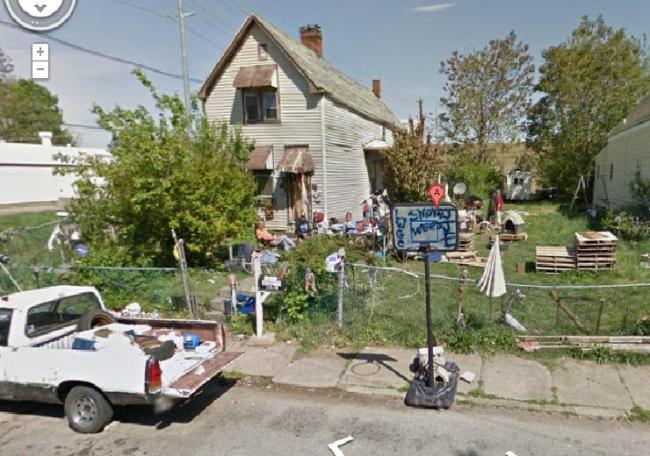SHELTER
Flophouse
Occupants of flophouses generally share bathroom facilities and reside in very tight quarters. The people who make use of these places are often transients. Quarters in flophouses are typically very small, and may resemble office cubicles more than a regular room in a hotel or apartment building.
American flophouses date at least to the 19th century, but the term “flophouse” itself is only attested from 1904, originating in hobo slang. In the past, flophouses were sometimes called “lodging houses” or “workingmen’s hotels” and catered to hobos and transient workers such as seasonal railroad and agriculture workers, or migrant lumberjacks who would travel west during the summer to work and then return to an eastern or midwestern city such as Chicago to stay in a flophouse during the winter. This is described in the 1930 novel The Rambling Kid by Charles Ashleigh and the 1976 book The Human Cougar by Lloyd Morain. Another theme in Morain’s book is the gentrification which was then beginning and which has led cities to pressure flophouses to close.”
This house, with the “smoke weed” back-board, usually had an upside down cross (that the pentecostal neighbor would flip right-side up), usually had more trash in the yard piled high, dogs running loose, usually had more people hanging out there.
The lot to the right was being squatted, people who couldn’t afford the dump would dump truck-loads there and it would get burned to grill dumpstered meat or just to stay warm. People went there to drink, or sleep off a drunk. People went there to talk gibberish or shout at the voices in their heads, people went there to figure out if they had any other place to go. Or folks just stopped by to visit the neighbor.
This house is gone now. Five house on this block were torn down in three years. The first sign is a hole in the street from disconnecting the sewer-line. Days later, the noise of a back-hoe and dump truck. In three days, two workers raze, grade, and seed it with grass.
This house was different. It wasn’t empty, but neither were some of the others. Also, this didn’t just happen with two workers. There were three city agencies out to make sure this home was torn down. The resident was jailed during the process, and the neighbors stood out to watch.
Not too far from the tracks where hobos still jump in and out of town. Just up from the creek and where the shanty camp was demolished to pave the Greenway. This Google image is the image of a space claimed by dozens and dozens of people over the years, and a hand full of folks since childhood. The city “cleaned it up” and made a bigger mess of people’s lives.
